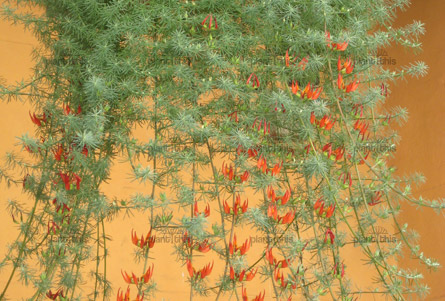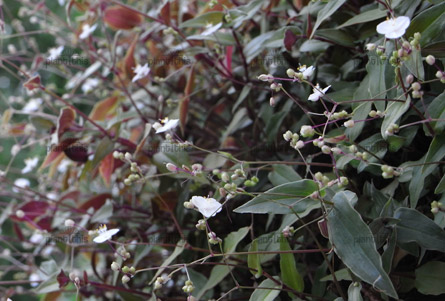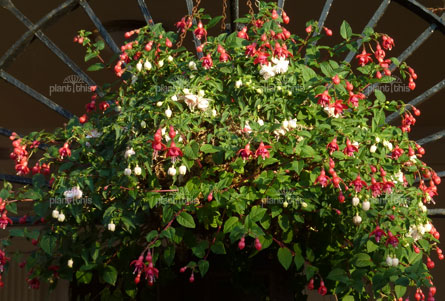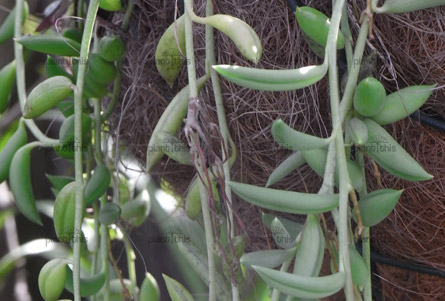vertical
hanging baskets
QUICK TIPS:
1. Locate for viewing from inside and out
2. Locate to minimise obstruction
3. Choose solid baskets for lower maintenance
4. Plant basket balls from the bottom up
5. Use trailing plants around the edges
6. Turn the basket occasionally
Reclaim airspace for gardening with hanging baskets.
For some living in small spaces they provide the only garden possible and should be located outdoors where they can give pleasure inside as well.
Take advantage of available space along the edge of balconies, walkways and passages. Posts and walls can be fitted with brackets for support.
Avoid locations and heights that invite head knocking. Don't obstruct vistas but don't hang so high, either, that installation and watering become difficult. Also ensure water draining out the bottom won't cause trouble below.
The issues to avoid with pots are amplified with hanging baskets. Either they dry out quickly with all sides exposed to the elements or they're poorly drained causing rot problems. Baskets about 30-40cm in diameter provide a trade-off: not drying too quickly without being too heavy.
Containers fall into two main categories. Baskets that are sealed - except for drainage holes - are better for lower maintenance plantings from a more restricted palette of tough, longer-term plants. They hold water better. Some have a self-watering reservoir and others can be planted and then tipped upside-down.
Wire frame baskets lined with things like coconut fibre, bark, moss, black plastic or layers of shade cloth can be used for higher-turnover, higher-maintenance seasonal flowering displays. Planting holes can be made all around these baskets to create spectacular balls of colour.
Plant these arrangements in layers from the bottom up, backfilling with potting mix up to the next layer as you go. Roots can be protected through threading into especially tight holes by wrapping with cling film. Stagger mixed plantings between each layer so the different species spiral around the basket.
On top, finish with bigger, more upright plants in the centre and fill gaps with plants that will trail over the edges.
As a 3D arrangement viewed from all sides, encourage balanced growth by hanging your work on a turning hook or rotating the basket occasionally so all sides get some sun.
Parrot's Beak - Lotus berthelotii
String of Bananas - Senecio radicans
Comments (0)
Tell our Plant Selector what you want & like and we'll search thousands of plant profiles for compatible matches
Special Offers

Plant of the Day
Fern Leaf Grevillea
Plant type: evergreen shrub
H: 4m W: 4m
Sunlight: hot overhead sun to dappled light

Fast Facts
vertical - use
Espaliering plants against a wall is an effective way to maximise sun exposure and increase fruit yields in restricted spaces with limited light.
Recently added vertical articles
Most viewed vertical articles
Get the Plant Selector's full features plus news, forums & competitions. Sign up, it's free.
Click here for more











You must be a member to share: Login or Register